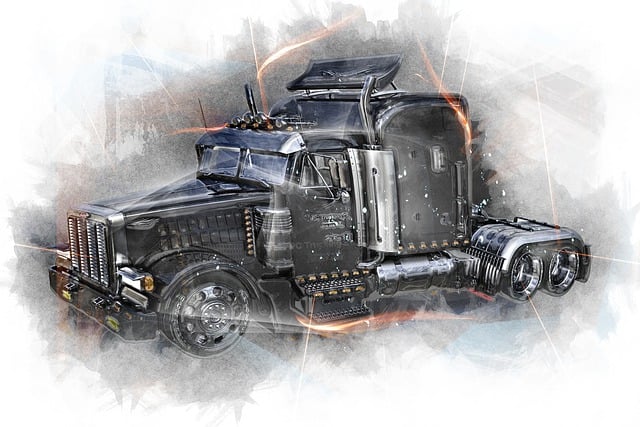Selecting semi truck insurance requires understanding liability, comprehensive, and collision coverages, plus specialized endorsements for cargo protection and roadside assistance. Meet Commercial Driver's License (CDL) requirements, use online resources to compare policies, consider advanced safety features, and inspect used trucks thoroughly. Assess specific needs like vehicle type, value, driving frequency, and operational continuity goals when choosing a policy that balances affordability and robust protection. Understand common exclusions, compare quotes from top providers, and secure competitive pricing for comprehensive coverage on Select Semi Trucks.
“Navigating the world of semi trucking insurance can be a complex task, but understanding your options is crucial for long-haul drivers. This comprehensive guide delves into the essentials of semi truck insurance, breaking down various coverage types tailored for select semi trucks and drivers’ unique needs. Learn how to choose the right policy, explore factors influencing premium costs, and understand common exclusions. By comparing quotes from top providers, you’ll gain insights to make informed decisions, ensuring your peace of mind on the open road.”
- Understanding Semi Truck Insurance Basics
- Types of Coverage for Long Haul Drivers
- How to Choose the Right Policy
- Factors Affecting Semi Truck Premium Costs
- Common Exclusions and Exceptions
- Comparing Quotes from Top Providers
Understanding Semi Truck Insurance Basics

Understanding the basics of semi truck insurance is crucial when selecting a suitable policy for your heavy-duty vehicle. Semi trucks, given their size and purpose, often require specialized coverage to protect against unique risks on the road. When comparing various options, it’s essential to know that insurance policies typically include liability coverage, which shields you from financial loss in case of accidents, as well as comprehensive and collision coverages for damage to your truck. Additionally, many policies offer specific endorsements tailored to semi trucks, such as cargo protection or roadside assistance, ensuring a more comprehensive safety net during long-haul trips.
One key aspect to consider is the CDL (Commercial Driver’s License) license requirements for operating semis. Ensuring that you meet these standards not only allows you to legally drive the vehicle but also influences the insurance companies’ risk assessment of your operation. Online resources, like semi truck auctions and comparison charts, can aid in navigating the different policy options available. By understanding these fundamentals, you’re better equipped to make informed decisions when selecting a semi truck insurance plan that aligns with your specific needs and keeps you protected during every journey.
Types of Coverage for Long Haul Drivers

When it comes to long haul driving, having the right insurance coverage is paramount for both peace of mind and financial protection. Drivers operating semi trucks over long distances face unique risks, from mechanical breakdowns to accidents in diverse weather conditions. Therefore, their insurance policies should be tailored to these challenges. The good news is that there are several types of coverage options available specifically designed for long haul drivers.
One crucial aspect to consider is selecting semi trucks equipped with advanced safety features. Modern trucks often come with collision avoidance systems, lane departure warnings, and automatic emergency braking, among others. These features not only enhance driver safety but can also significantly reduce claims, potentially leading to lower insurance premiums. Additionally, when purchasing a used semi truck, a thorough inspection should be conducted to ensure it’s in good working condition and meets the necessary safety standards. This step, coupled with the right insurance policy, will go a long way in ensuring safe and efficient operation on the highway.
How to Choose the Right Policy

Choosing the right policy for your semi trucks involves careful consideration to ensure adequate coverage and protection. Start by assessing your specific needs; this includes understanding the type and value of your vehicles, driving frequency and distance, as well as any special considerations like hauling hazardous materials. The number of years in operation and your company’s financial health are also crucial factors when selecting a policy.
When navigating the options available for semi trucks, explore both traditional and specialized providers. Top-rated semi truck brands often have associated insurance plans catering to their customers’ unique requirements. European semi trucks in the USA might necessitate specific coverage considering their distinct features and regulations. Compare policies based on comprehensive and collision coverage limits, liability options, and additional perks like roadside assistance and rental coverage during repairs. Select a plan that strikes a balance between affordability and robust protection, aligning with your company’s goals for both semi truck safety features and operational continuity.
Factors Affecting Semi Truck Premium Costs

When it comes to insuring a semi-truck, several factors influence the premium costs. These include the age and condition of the vehicle, which can determine repair and maintenance expenses. Older trucks might require higher premiums due to increased potential for breakdowns or accidents. Additionally, the type of cargo transported plays a significant role; hauling hazardous materials may necessitate specialized coverage with higher rates.
The operation type is another critical consideration. For instance, if you operate autonomously driven semi-trucks or engage in heavy hauling using semis, these unique operations can significantly impact insurance costs. Moreover, your driving record and experience level are key factors. Safe and responsible drivers often enjoy lower premiums, while those with a history of accidents or violations may face higher rates. The overall risk associated with your specific trucking operation is reflected in the insurance premium.
Common Exclusions and Exceptions

When considering insurance for your semi-truck, it’s important to understand common exclusions and exceptions that may apply. While comprehensive coverage is crucial for protecting your investment, certain risks are often not included in standard policies. For instance, many policies exclude damage caused by negligence or mishandling of the vehicle. Additionally, environmental hazards like flooding or extreme weather conditions might not be covered without specific add-ons.
When selecting a semi-truck, whether through a reputable commercial truck dealership near me or when considering European semi trucks in USA, it’s vital to carefully review these exclusions. This knowledge will help you make an informed decision on how to choose the right semi-truck insurance policy that aligns with your specific needs, ensuring adequate protection for your vehicle and business interests.
Comparing Quotes from Top Providers

When shopping for semi trucking insurance, comparing quotes from top providers is a smart strategy to ensure you’re getting the best coverage at a competitive price. Start by identifying your specific needs and the type of semi trucks you operate, whether it’s a traditional fuel truck, an innovative electrical semi trucks overview, or a specialized carrier. Then, gather quotes from several reputable insurance companies catering to the trucking industry.
Remember that the market offers various options when selecting semi trucks, including top-tier brands known for their durability and performance. The same principle applies to insurance; some providers specialize in commercial trucking and can offer tailored packages catering to the unique risks associated with large cargo vehicles for sale. Take your time to review policy details, coverage limits, deductibles, and exclusions before making a decision. This process will help you make an informed choice when insuring your valuable semi trucks.
When selecting a semi truck insurance policy, understanding the basics, exploring diverse coverage options, and comparing quotes from top providers are key steps. By factoring in premium costs and being aware of common exclusions, you can make an informed decision that best suits your long haul driving needs. Remember, the right policy offers peace of mind, ensuring you’re protected on the road while navigating the vast landscapes ahead.
